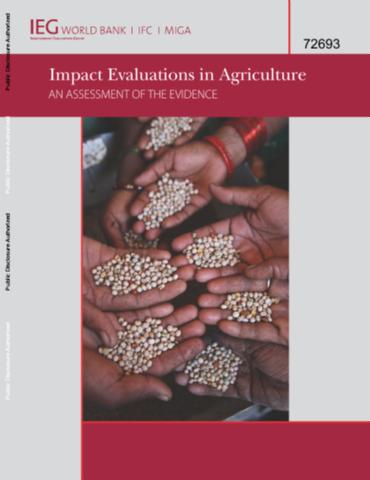Resource information
This report seizes the opportunity to learn from existing evidence by analyzing lessons derived from impact evaluations produced between 2000 and January 2009 to begin to discern what has been effective in agriculture. It is part of a broader effort being undertaken by the Independent Evaluation Group (IEG) of the World Bank to understand how impact evaluations can help improve performance and broadly disseminate those lessons. Specifically, the report has three objectives: 1) assess the current state of impact evaluations in the agriculture sector and highlight challenges that users face when trying to answer what works best in the sector; 2) derive a taxonomy of agriculture interventions evaluated using impact evaluation methodology, and identify the most common constraints for farmers and addressed by those interventions; and 3) highlight what can be said about the impact of different interventions on agricultural outcomes (focusing on productivity and farm income). Also, point to areas for future research of agricultural interventions to broaden the use of this analysis. The rest of this chapter provides some necessary definitions for the report, outlines the conceptual framework, and presents a brief background on the selection of impact evaluations (IEs) from the evaluation literature. Chapter two provides a profile of the evidence, including IE characteristics and challenges encountered in the analysis. Chapter three looks within the interventions and presents a formal taxonomy of all agricultural interventions represented in the group analyzed for the report. Chapter four delves into the evidence by presenting the primary constraints dealt with in the interventions, the results reported by the evaluations, and some lessons that may be incorporated into future project design. Chapter five concludes with some general remarks.


